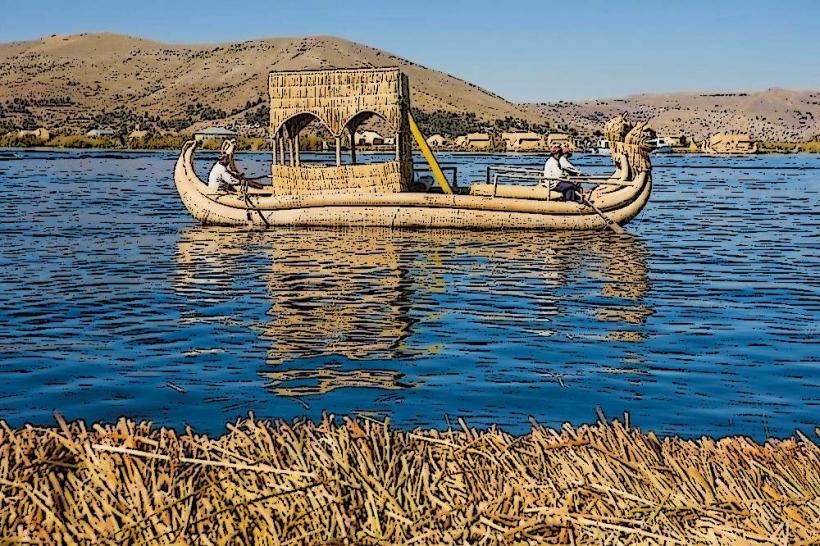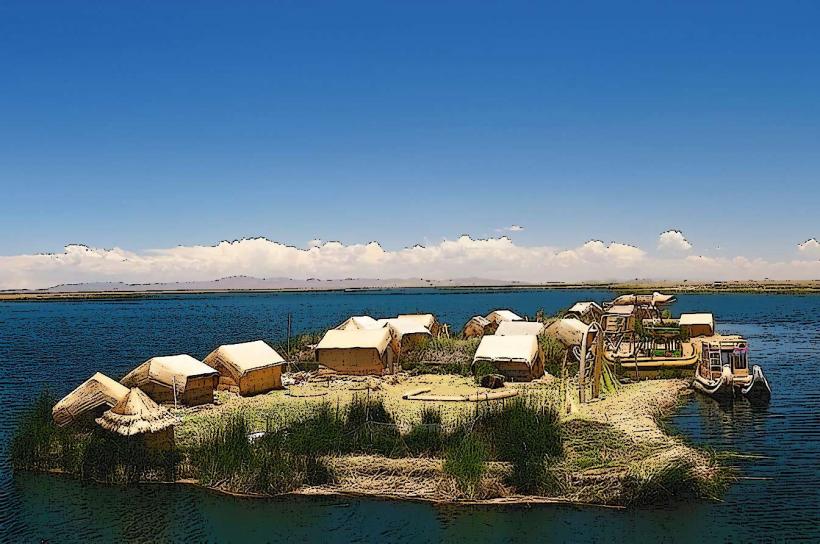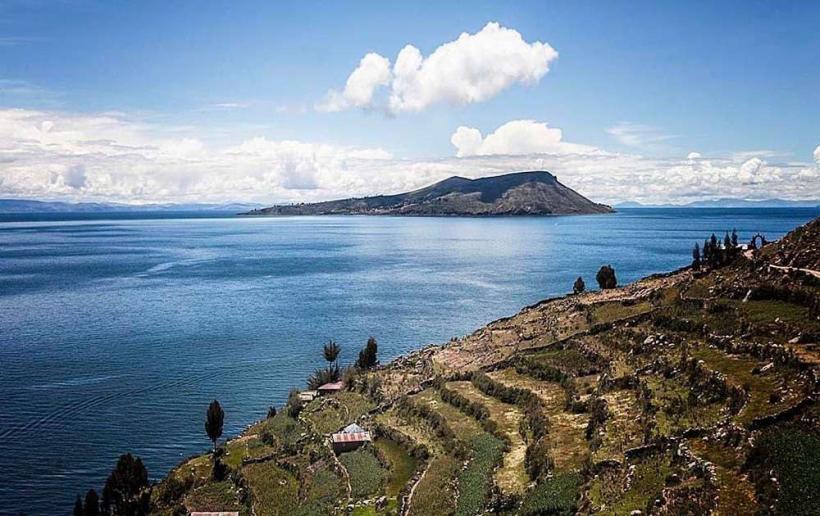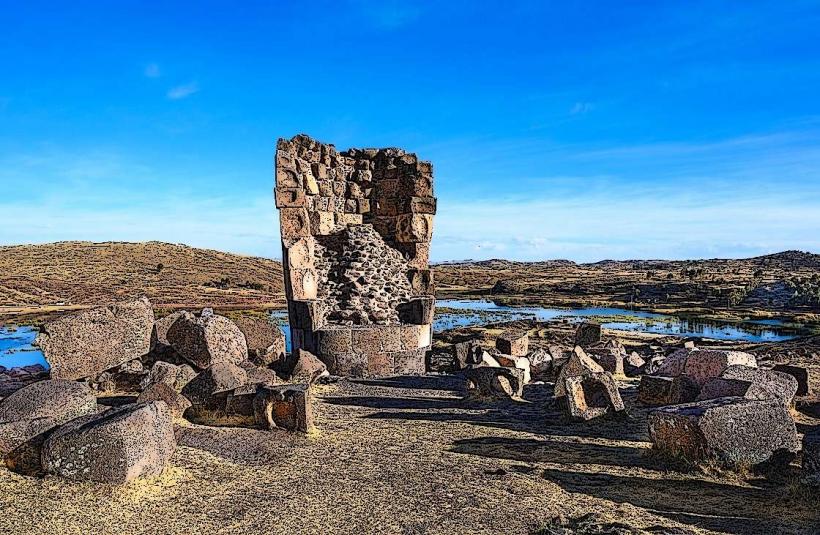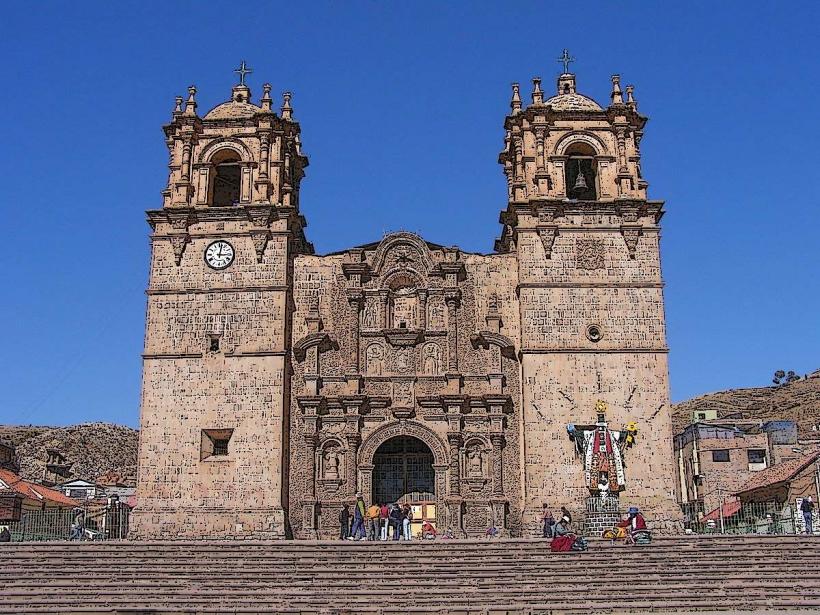Information
Landmark: Amantani IslandCity: Puno
Country: Peru
Continent: South America
Amantani Island, Puno, Peru, South America
Overview
Amantani Island sits like a quiet jewel on the blue waters of Lake Titicaca, just off the coast of Puno, Peru, simultaneously it’s one of the lake’s biggest islands, famous for its rich Andean traditions, sweeping mountain views, and the warm smiles of its people.While many crowded tourist spots blur together, Amantani feels genuine-you can sleep in a family’s spare room, wake to the smell of fresh bread, and share the rhythm of life with Quechua-speaking islanders, what’s more amantani Island sits on the sparkling blue waters of Lake Titicaca, about 36 kilometers (22 miles) from Puno, Peru.Covering roughly 9 square kilometers (3.5 square miles), it’s home to around 3,000 residents, most of whom speak Quechua, what’s more the island is celebrated for its terraced hills, traditional farming, and vibrant festivals, as well as Inca ruins like the Pacha Tata and Pacha Mama temples.Visitors often stay with local families, join Andean rituals, and take in sweeping views of the lake from sun‑warmed stone paths, as well as people once gathered at these sites for rituals and sacrifices to honor the Inca gods.Today, the island’s people hold swift to their Quechua roots, tending fields of maize and crafting intricate textiles and clay pottery by hand, as well as for centuries, the people of Amantani have kept alive their ancestral customs and a close-knit, communal way of life.The island’s spiritual roots run deep, weaving Andean traditions with reverence for nature-especially the sun’s warmth at dawn and the moon’s silver glow at night, also key attractions on Amantani Island include:The Pacha Tata and Pacha Mama temples stand among the island’s most essential Inca ruins, their weathered stones warming in the afternoon sun.The Pacha Tata (Father Earth) temple honors the earth itself, while the Pacha Mama (Mother Earth) temple is dedicated to the moon and a sense of motherly protection, furthermore perched on the island’s highest peaks, both offer sweeping views of deep-blue Lake Titicaca and the scattered green islets beyond.Amantani remains a farming community, where corn, potatoes, and quinoa grow in careful rows along the terraced hillsides, not only that visitors can explore the island’s ancient agricultural terraces, where stone walls hold back the earth and stories of sustainable farming stretch back generations, guided by locals who may welcome them onto their own family farms to show how crop rotation and other time-tested methods keep the fields green despite thin air and harsh winds; and for many, the true highlight is staying in a homestay, sharing daily life under the same roof as their hosts.Visitors can step into the rhythm of island life-helping in the fields under the warm sun or sharing a simple meal at a family’s wooden table, after that staying with a local household opens a window into traditional Quechua culture, where you might weave dazzling wool, stir a simmering pot, or join in a lively dance.Meals come straight from the land: earthy potatoes, fresh cheese, nutty quinoa, and other harvest staples, alternatively for those who wander, the island’s trails climb toward quiet ridges with sweeping, unforgettable views.A favorite trek takes you up to the island’s summit, where the lake glimmers below and the jagged Andean peaks rise far off in the distance, alternatively along the way, you can wander past ancient stone terraces, still etched with the lines of centuries-timeworn farming.All year, Amantani comes alive with festivals that honor Andean religious traditions, equally important in July, the Feast of the Virgin of Carmen fills the streets with color, as locals in embroidered skirts and wide-brimmed hats dance and take part in age-heritage rituals.Visitors can join the crowd to watch lively Andean steps echo through the plaza, moreover if you’re staying with a family, they might invite you to join a dance, swaying in the island’s luminous, handwoven clothes.Men wear ponchos and knitted chullos pulled low against the wind, while women wrap themselves in glowing skirts and soft shawls, subsequently from Puno’s port, boats leave regularly for Amantani Island.The boat ride usually lasts two to three hours, with most tours stopping at the Uros Islands and Taquile Island before reaching Amantani-a trip filled with dazzling blue water views and rich local culture, also private tours are available if you’d like a more tailored experience or have limited time.The best months to visit are during the dry season, from May to October, when the skies stay clear and the sun warms the trails, perfect for hiking, besides from November to April, frequent showers in the rainy season can make the journey more challenging.Not surprisingly, This season, the island bursts into its deepest green, the hills smelling faintly of fresh earth after rain, and with fewer tourists around, it’s the calmest time to visit-perfect for soaking in Amantani’s authentic Andean life, from staying with local families and learning age-heritage farming methods to wandering terraced slopes that frame dazzling views of Lake Titicaca, exploring ancient Inca temples like Pacha Tata and Pacha Mama, hearing Quechua spoken in everyday life, and admiring stone homes with thatched roofs built to weather the high-altitude chill, on top of that whether you’re trekking toward crumbling stone ruins, sharing a meal with a host family, or pausing to watch sunlight ripple across Lake Titicaca, Am
Author: Tourist Landmarks
Date: 2025-09-13

